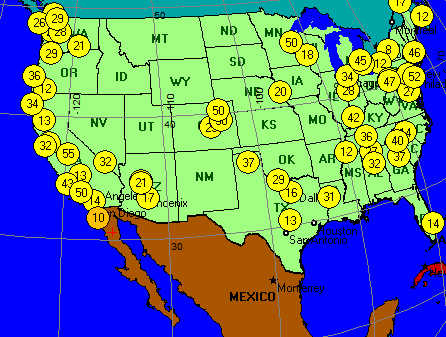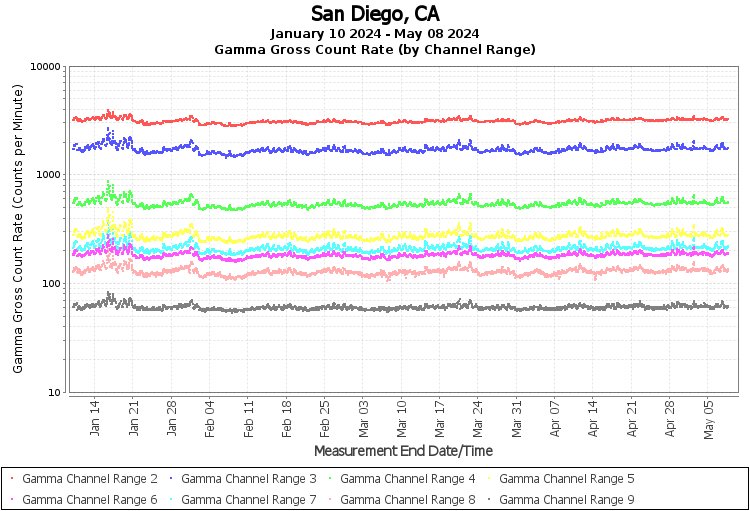Punta Banda- Cantu Radiological Survey
Details of geiger activity today are available here and daily average geiger count levels can be visualized in the interactive graph below. The current geiger reading can also be viewed in the context of a continent wide map provided courtesy of the independent citizen science based Radiation Network (see map below). Some survey data is archived here and information on the Geiger counter used in this survey is here.
Daily Average Geiger Counts per Minute (2013-)
|
|
Punta Banda Radiological Background: Selecting the interior of the graph allows for zooming |

|
Surveys of background radiation directly serve public health by providing a quantitative estimate of the potential radiological health impact associated with a local geography. Establishing a radiological background baseline in a given area is critical to the ability to detection any unusual deviations from the natural setting. Baseline radiation background data can be of importance when faced with tracking impact associated with radiological pollution from nuclear releases in other areas of the world. Continuous real time monitoring also provides instantaneous information about radiological atmospheric contaminants.
Governmental Radiological Monitoring Networks
The US EPA has established a radiological monitoring network known as Radnet that spans the continental United States. Health Canada has a similar Fixed Point Surveillance Network. These radiological detection networks along with those of selected other governments have publicly accessible, spectrally resolved and isotope specific regional data (See the EPA widget).
The Government of Mexico's Commission for Nuclear Safety and Safeguards (CNSNS) is working in collaboration with the US 1, 2, World Health Organization, and the International Atomic Energy Agency to update and expand it's nuclear and radiological and nuclear monitoring, control, and storage capacity. Nonetheless by some accounts 3, 4, "the nuclear/radiological infrastructure necessary for an effective [nuclear or radiological] response [by the Government of mexico] is old and unreliable." The nearest gamma radiation detection facility to Esteban Cantu is the RadNet station in San Diego. The near real time data from this facility can be seen below.

Equipment Details:
Specifications for the Mazur PRM-8000 Geiger counter used in this survey. The PRM-8000 is calibrated via reference to Cesium 137 such that 1 CPM is equivalent to 1 uSv/hr.